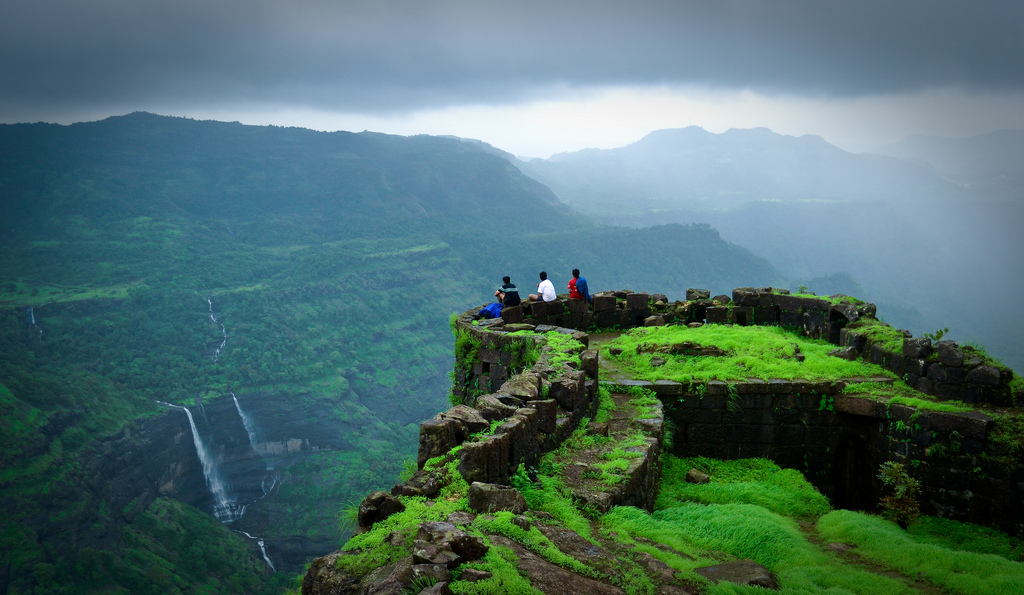Rajmachi Fort, ensconced amidst the breathtaking Sahyadri mountain range in Maharashtra, is a living testament to the rich tapestry of history and the unspoiled beauty of nature. This formidable fort has not only borne witness to centuries of historical events but also beckons trekkers, history aficionados, and those yearning to immerse themselves in Maharashtra’s glorious heritage.
History of Rajmachi Fort:
Rajmachi Fort boasts a storied past that dates back over 300 years. Initially constructed by the Satavahanas, it later found significance during the reign of the Maratha Empire, primarily under Chhatrapati Shivaji Maharaj. The fort underwent several shifts in power over the centuries, witnessing pivotal events that have left an indelible mark on its history.
Architecture and Structures:
The architectural marvel of Rajmachi Fort mirrors the military genius of its era. Its robust stone walls, formidable bastions, and imposing gateways are a testament to its strategic importance. The fort is divided into two distinct hilltops, Shrivardhan and Manaranjan, each housing unique attractions. While exploring the fort, trekkers often encounter remnants of old structures and water cisterns, adding to the mystique of this historical treasure.
Cultural and Historical Significance:
Beyond its historical value, Rajmachi Fort is a repository of cultural heritage. It stands as a tribute to the valor and vision of Chhatrapati Shivaji Maharaj and the Marathas in safeguarding their land and culture. The fort’s significance extends to literary circles, with renowned author Shri. V.S. Khandekar setting his celebrated novel ‘Yayati’ within its historic confines.
Visitor Information:
Reaching Rajmachi Fort requires a picturesque trek through dense forests, rocky trails, and steep inclines. The fort is accessible year-round, and a nominal entry fee contributes to its preservation. Trekking to Rajmachi offers an adventure that allows you to connect with the pristine natural beauty of the Sahyadri mountains.
Best Time to Visit:
The post-monsoon season, spanning from October to March, presents the most favorable conditions for exploring Rajmachi Fort. During this period, the weather is salubrious, and the landscape is adorned with vibrant greenery, providing an ideal setting for trekking and savoring the fort’s historical and natural wonders.
Nearby Attractions:
The vicinity of Rajmachi Fort abounds with attractions. Nature enthusiasts can explore the tranquil Kataldhar Waterfall and the scenic Duke’s Nose viewpoint. For those keen on historical exploration, Kondhane Caves and the Karle Caves, known for their rock-cut architecture, are nearby.
FAQs (Frequently Asked Questions):
1. How long does it take to trek to Rajmachi Fort from the base village?
The trek to Rajmachi Fort can take approximately 2 to 3 hours from the base village, depending on your trekking pace and the chosen trail.
2. Is it possible to camp at Rajmachi Fort overnight?
Yes, camping is allowed at Rajmachi Fort. Many trekkers opt for overnight stays to experience the fort’s serene ambiance and starlit skies.
3. Are there any guides available for the Rajmachi trek?
Yes, local guides are available at the base village to assist trekkers and provide insights into the fort’s history and trails.
4. Can you visit both Shrivardhan and Manaranjan forts in a single day trek?
Yes, it’s possible to explore both Shrivardhan and Manaranjan forts in a single day trek. However, this might require an early start and efficient time management.
5. Are there any accommodation options at the Rajmachi base village?
Yes, there are basic accommodation options, including homestays and small lodges, available at the Rajmachi base village for those planning an extended stay.
Conclusion:
Rajmachi Fort invites you to embark on a remarkable journey through history, nature, and adventure in the embrace of the Sahyadri mountains. It is more than just a fort; it’s a living chronicle of Chhatrapati Shivaji Maharaj’s legacy and the Maratha spirit. As you navigate its challenging trails and explore its ancient structures, you are not just visiting a historical site; you are participating in a timeless narrative of valor, endurance, and the enduring allure of Maharashtra’s heritage.
Featured Image – https://en.wikipedia.org/
